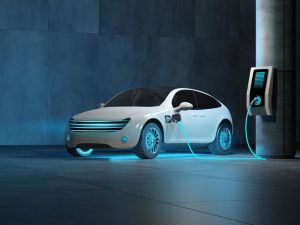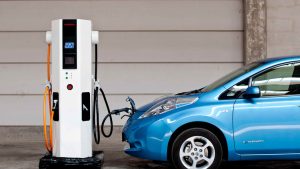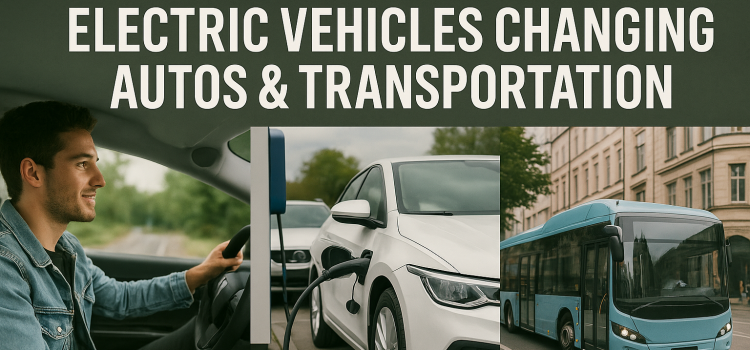
Introduction
The world of cars is shifting fast. Electric vehicles no longer sit in showrooms as curiosities. They lead a new wave of electric transportation across cities and highways. Car makers, tech firms, and governments all push for cleaner roads. Charging stations grow by the day, and battery packs get more powerful.
More drivers choose EVs because they save money on fuel, cut emissions, and feel smooth to drive. Public buses and delivery vans join the movement too. This article dives into how electric cars work, why they matter, and where the industry goes next. You’ll learn about the latest EV battery technology, the state of EV charging infrastructure, and the real electric vehicle benefits. We also cover electric vehicle challenges and offer tips for your first e-ride. Let’s explore this clean-energy revolution on wheels.
What Is an Electric Vehicle?
An electric vehicle runs on electric motors instead of a gasoline engine. It uses batteries to store energy. Drivers charge the pack at home or public stations. EVs include full electric cars and plug-in hybrids. Full electric models need no gasoline at all. Plug-in hybrids mix an electric motor with a small gas engine.
More models hit the market each year. From compact city cars to large SUVs, electric cars now suit many tastes. They accelerate quickly and feel quiet on the road. Because they have fewer moving parts, EVs often need less maintenance than gas cars. That is one of the key electric vehicle benefits drivers praise.
How Electric Vehicles Work
At the heart of every EV is the electric motor. It converts battery power into motion. The battery pack stores energy in cells, similar to a laptop battery but much larger. When you press the accelerator, the motor draws power from the pack.
Regenerative braking helps too. When you slow down, the motor acts like a generator and feeds energy back into the battery. This process boosts efficiency. Most EVs use lithium-ion batteries, prized for high energy density and long life. Car makers keep improving these packs through better EV battery technology.
Charging works in stages. Level 1 uses a standard home outlet and takes many hours. Level 2 uses a special home or public charger to refill in a few hours. DC fast chargers, found on highways, can add 80 percent charge in 20 to 40 minutes. This tiered approach makes EV charging infrastructure flexible for all drivers.
Benefits of Electric Vehicles

Switching to electric vehicles delivers many electric vehicle benefits. First, EVs cost less to run. Electricity per mile often beats gasoline. Many owners charge overnight at lower rates. Second, EVs emit no tailpipe pollution. This fact helps cities meet clean-air goals and cuts greenhouse gases.
Third, EVs require less upkeep. No oil changes, fewer filters, and simple motors mean lower repair bills. Fourth, they offer instant torque for quick starts and smooth driving. Finally, incentives and rebates in many regions make EVs more affordable. Tax credits, HOV-lane access, and free parking may sweeten the deal.
All these perks drive the electric mobility trend and push more drivers toward battery power.
Key Advances in EV Battery Technology
Battery costs have dropped by over 80 percent in the past decade. This shift is critical for electric cars to rival gas vehicles. New chemistries like nickel-rich cathodes boost energy storage. Solid-state batteries promise faster charging and greater safety, as they use a solid electrolyte instead of liquid.
Manufacturers also focus on battery management systems. These smart controllers balance cell charges and extend pack life. Reusing old EV packs in stationary storage helps grids absorb solar and wind power. This recycling effort links sustainable transport and renewables.
Solid-state batteries remain costly but are close to commercial use. Once they arrive, EV range and charging speed will leap forward, making electric transportation even more practical.
EV Charging Infrastructure

A key hurdle for electric mobility is charging access. Governments and private firms now build fast-charge networks nationwide. Highway rest stops and urban centers host banks of chargers. Apps show real-time availability, pricing, and connector types.
Charging networks come in tiers. Level 1 works at home. Level 2 appears at businesses and public lots. DC fast chargers live on major routes for long trips. Some regions offer free charging at shopping centers to attract EV drivers.
For apartment dwellers, property managers install shared chargers. Workplace charging perks employees who drive EVs. Rapid expansion of EV charging infrastructure boosts driver confidence and eases range anxiety.
Leading Electric Car Models in 2025
The EV market now features dozens of models. Dreams of range and style are no longer dreams. Prices vary from affordable city cars to luxury sedans. Below is a quick look at top picks:
| Model | Range (miles) | Charge 20–80% | Starting Price |
|---|---|---|---|
| Nissan Leaf | 212 | 40 min (DC) | $28,000 |
| Tesla Model 3 | 333 | 30 min (SC) | $40,000 |
| Chevrolet Bolt | 259 | 35 min (DC) | $32,000 |
| Ford F-150 Lightning | 300 | 45 min (DC) | $53,000 |
| Hyundai Ioniq 5 | 303 | 35 min (DC) | $42,000 |
This table shows how range, price, and charging speed line up. More models appear each year, widening choices for drivers.
Electric Vehicles in Public and Commercial Transport
Electric transportation extends beyond private cars. Cities adopt electric buses, saving fuel and cutting noise. Delivery fleets switch to EV vans for lower operating costs. Ride-hail services offer EV options for riders who care about emissions.
Cargo ships and trains experiment with battery power and hydrogen fuel cells. Airports test electric ground vehicles. Even two-wheelers join in, with electric bikes and scooters on city streets.
This shift to EVs in public and commercial realms multiplies benefits. Cleaner air, quieter streets, and reduced fuel imports all improve quality of life.
Electric Vehicle Challenges
No shift is perfect, and electric vehicle challenges remain. High initial cost can deter buyers. While total ownership cost is lower, the sticker price sits above many gas rivals. Range anxiety still scares some drivers, though expanding chargers ease worry.
Charging at home may be tough in rentals or dense cities. Upgrading wiring and paying installation costs adds hurdles. Battery production relies on metals like lithium and cobalt, which pose supply and ethical concerns. Recycling batteries at end of life is still ramping up.
Governments address these issues with incentives to lower prices, grant programs for chargers, and research into new battery chemistries. Tackling these challenges is key to wider EV adoption.
The Future of Electric Mobility

The road ahead points to more innovation. Solid-state batteries promise 500+ miles range and 10-minute charges. Wireless charging lanes under roads could power cars as they drive. Vehicle-to-grid systems let parked EVs feed energy back to the grid at peak times.
Autonomous EV shuttles may roam campuses and city centers. Shared electric fleets could cut car ownership rates. Integration with renewable energy sources will make EVs truly green. 5G connectivity may let cars share traffic and charging data in real time.
This bright future hinges on continued investment and supportive policies. As EVs evolve, electric transportation will reshape how we live, work, and travel.
Tips for Switching to an Electric Vehicle
Ready to go electric? First, research local incentives. Federal and state credits can shave thousands off the price. Next, check home charging options. A Level 2 charger adds convenience, but Level 1 works in a pinch.
Plan your typical trips. If you drive under 50 miles daily, even a mid-range EV meets needs easily. Test drive a few models to find your perfect fit. Insurance rates and service networks vary, so compare before buying.
Join online EV communities to learn from current owners. They share road trip routes, charging tips, and repair shops.
Finally, charge smart. Plug in overnight at lower rates and top off during errands. Proper battery care extends range and pack life. With these pointers, your switch to electric vehicles will be smooth and rewarding.
Conclusion
Electric vehicles and EVs stand at the center of a new era in autos and electric transportation. Advances in EV battery technology and expanding EV charging infrastructure clear the way. The electric vehicle benefits—lower fuel costs, cleaner air, and smooth driving—draw more buyers each year. Despite electric vehicle challenges, innovations in batteries, wireless charging, and vehicle-to-grid integration paint a bright future. From private cars to buses and delivery vans, EVs reshape mobility worldwide.










